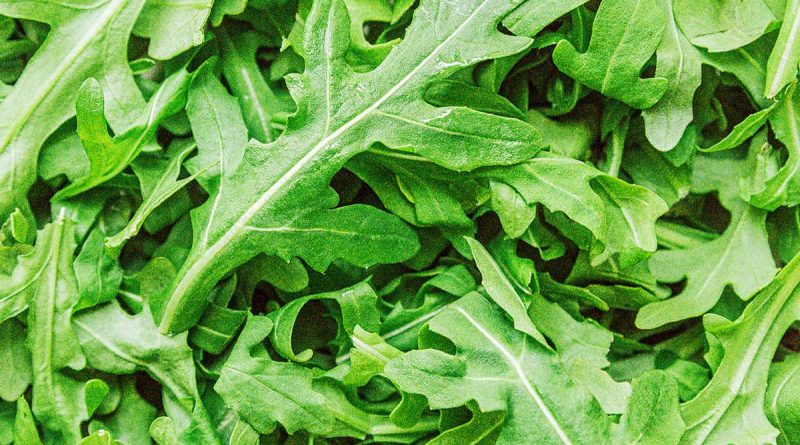Benefits of Arugula – Nature’s Fat Burner!
Discover the incredible weight loss benefits of arugula, how to best prepare it, and how much you should eat to get the maximum benefit from arugula – one of nature’s amazing fat-burning foods.
A cruciferous vegetable is known alternatively as rocket, rucola, and roquette, arugula has been in existence since the age of the Romans. As a matter of fact, since that time the Italians have always used arugula leaves in their cuisine and the seeds for aromatic oils.
Since the first century, it has been believed that arugula seeds have amazing power and were used as an aphrodisiac formula.
Arugula has tiny leaves that are bright and dark with a leaf shape and taste similar to radishes, which means it has a zesty, sharp, and peppery flavor. A stronger peppery flavor is a feature of older leaves as well as those produced in hotter conditions.
Fat Burning Benefits of Arugula
Possessing phytochemicals called indoles, and arugula aids in warding off cancer. Besides containing little calories, carbohydrates, and sodium, the vegetable has zero fat or cholesterol.
It is plentiful in the following nutrients: protein, riboflavin, thiamin, Pantothenic acid, Vitamin B-6, copper, folic acid, zinc, dietary fiber, calcium, magnesium, iron, potassium, manganese, phosphorus, and Vitamins A, C, and K.
It contains a lot of calcium and potassium for bone-building and stable blood pressure. Fiber gives you a sensation of satiety; plus, it aids in the quick elimination of toxins via stools.
Furthermore, it is a rich source of vitamins A and K plus folate.
Folate is essential to the creation of new tissue growth. Folate promotes healthy development and optimal condition.
Because the human body can’t make folate, you have to obtain the required amounts of folate from foods or vitamin supplements. Because overcooking can easily wipe out folate, you must avoid overcooking arugula leaves.
The fat-soluble Vitamin A helps maintain good eyesight, soft skin, and moist mucous membranes. It’s antioxidant characteristics aid in repelling free radicals from harming cells and tissues of the body.
Vitamin K facilitates the body’s synthesis of calcium. It helps protect against brittle bones and promotes skeletal strength. An additional advantage that Vitamin K has is that it helps blood to clot.
Arugula contains a high amount of beta carotene, a potent antioxidant that is helpful in the prevention of problems related to vision, including night blindness; it is also helpful in preventing skin disorders, colds, the flu, viruses, and chronic infections because it boosts your body’s immunity, which helps to protect it from harmful toxins. Also, it protects people from cancer.
Arugula contains an abundance of lutein, which is a potent antioxidant. As an antioxidant, Lutein combats free radicals in the system.
Research has also shown lutein to be good for the eye, heart, and skin as well as effective against cancer, diabetes, and immune difficulties.
How To Prepare Arugula
The wholesome, delicate leaves of arugula are best eaten uncooked. They add an amazing peppery flavor to green salads. You can eat them as the main green, leafy vegetable, (but bear in mind that they do have a strong flavor, so base your decision on this fact), or in a tossed salad mixed with other greens.
Older, full-grown leaves are more suited for cooked dishes, a staple in recipes from Italy.
Arugula leaves have a peppy flavor that makes a nice fruit salad accompaniment. Use them sparingly to add delicious pizzazz to fruit salads.
Add them to recipes for sauce or stew, or fry some up to go with your main course. Young arugula should be used for salads, but the older arugula should be cooked. Ideally, the arugula leaf will appear a vibrant, deep green. If leaves look limp or are yellowing, pass them by. Rinse off the arugula and spin or pat dry, then keep it safely in your fridge wrapped in plastic.
Make plans to eat it in one or two days for the best results, so it stays fresh since it is a very delicate vegetable.
Amount To Eat
An average serving of arugula is 1/2 cup daily.


